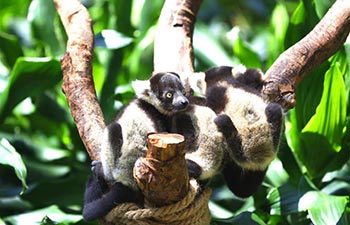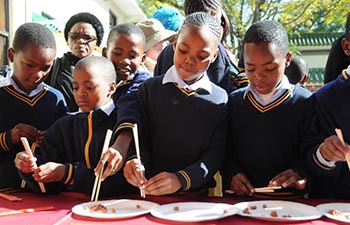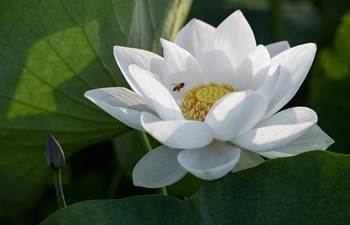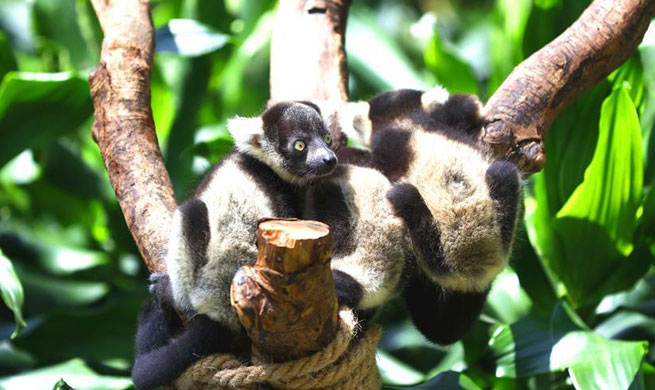BEIJING, June 16 (Xinhua) -- The trees in Beijing's parks provide shady relief and a scenic environment during the hot summers, thanks to the army of tiny insects that protect them from pests.
This week staff at Beijing Purple Bamboo Park and researchers have released 20,000 insects, including Scleroderma guani and Dastarcus helophoroides (Fairmaire).
The natural predators of the longhorn beetle, the insects are released from tubes in trees and they quickly began their search for beetle larvae.
They kill the larvae and lay eggs, which hatch into adult worms and eat all the beetle larvae in 30 days.
The park has been using them to safeguard its trees since 2014.
The use of natural predators against pests was recorded in China as early as 300 AD. "At that time, people in south China used an aggressive ant to prey on pests," said insect researcher Zheng Li.
Common Beijing trees, such as willow, white wax and white birch, are vulnerable to pests, and the longhorn beetle is the top enemy. Its larvae are often hidden in the tree trunk and they can eat a tree hollow before they're found.
Natural enemies are more environmentally friendly and often more efficient than pesticides, said Zhu Yingzi, an official with Beijing Municipal Administration Center of Parks.
Eleven parks, including imperial gardens such as the Summer Palace and Temple of Heaven, will use 650 million insects of seven species to protect trees and plants from pests this year.
The Temple of Heaven has largest number of old trees in urban Beijing, with 3,562 trees that are centuries old.
















